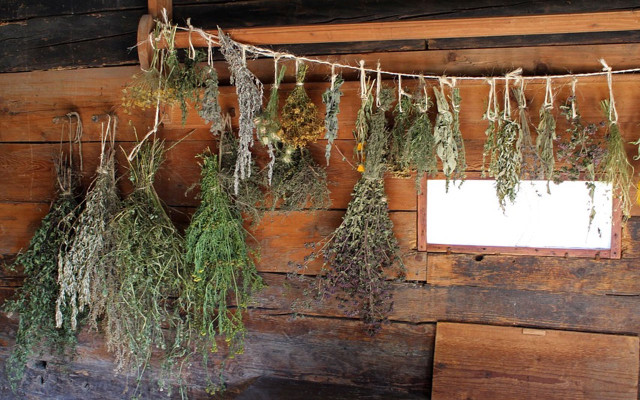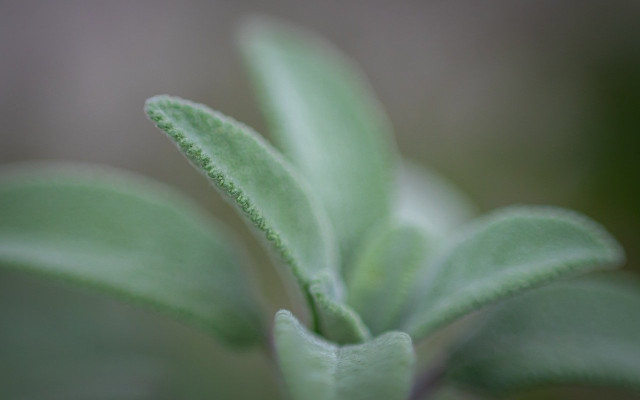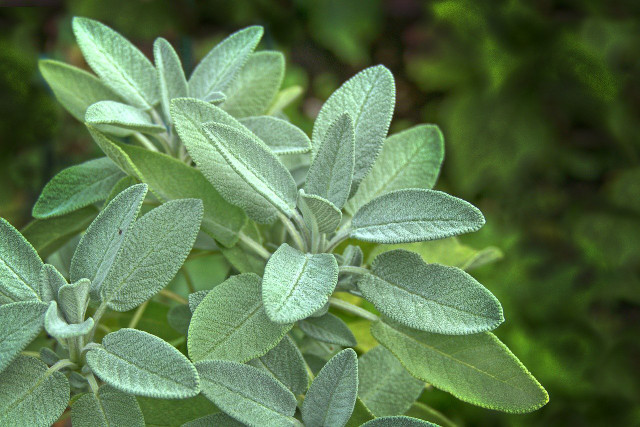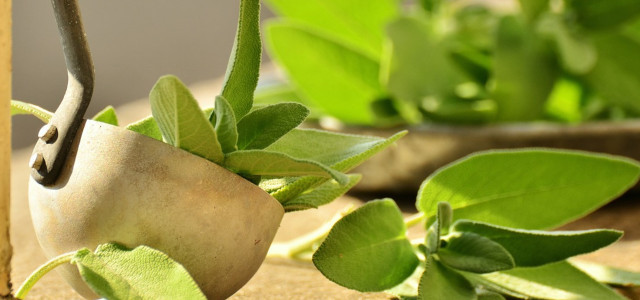After drying sage, the herb can be used to refine and season food all year long. We’ll show you how to dry sage properly, so that it stays fresher for longer.
Sage is a popular herb used to season food across many different cuisines, but in addition to flavoring food, it is also a natural antiseptic and is used in many ways in traditional medicine.
For example, tea made of dried sage is one of the best teas for sore throats, and it can be used as a home remedy for colds. And one of its lesser-known but most useful applications: if you like to eat garlic, chewing on a sage leaf or two after a meal can help get rid of garlic breath.
How to Air-Dry Sage

- Choose a dry, well-ventilated area that it about 70-80° F for drying your sage.
- Bind the stems of the sage leaves together to make small bundles. Make sure the bundles aren’t too big, to prevent moisture from becoming trapped in the middle. Hang the bundles upside down.
- If the stems aren’t long enough to tie together, lay your sage leaves out on a piece of parchment paper, making sure that they aren’t too close together.
- Drying sage takes about ten days.
How to Dry Sage In the Oven



If ten days is too long to wait, try drying sage in your oven. This method is much faster, but also uses much more energy. Try to only use this method if you are truly pressed for time, not just to get the process over-with more quickly.
Here’s how to dry sage in the oven:
- Line a baking sheet with parchment paper and spread out the sage leaves.
- Heat the oven to 100 degrees and allow the sage leaves to dry for about six hours.
- Be sure to turn the leaves regularly, and leave the oven door slightly open, to let the moisture escape.
After drying sage, it’s important to store it properly, to prevent it from losing its flavor and medicinal properties. It is best to store herbs in dark, airtight containers, like these on Amazon**. But if you’d rather not spend money, you can also store sage in recycled glass jars in a place where they are not exposed to direct sunlight. If stored properly, sage will stay fresh for up to a year.
Harvesting Sage



Before you dry sage, it is important to harvest it properly. If you grow and harvest the herb in your own kitchen herb garden, there are a few things to keep in mind:
- When a sage plant flowers, it becomes woody and its natural aroma weakens: the herb is most potent when it is young.
- To prevent flowering, it is important to continuously trim your sage plant. But be careful to trim it only in places where the stems are still young: if you cut them where they are already woody, the shoot will not sprout again.
- Don’t wash the sage leaves after harvesting, as this will cause them to lose some of their aroma. Instead, brush off any visible dirt or debris on the leaves.
- To lock in as much of the essential oils as possible, you’ll want to start drying your sage as quickly as possible after harvesting.
This article has been translated from German to English by Christie Sacco. You can read the original here: Salbei richtig ernten und trocknen – darauf solltest du achten
** Links to retailers marked with ** or underlined orange are partially partner links: If you buy here, you actively support Utopia.org, because we will receive a small part of the sales proceeds. More info.Do you like this post?






